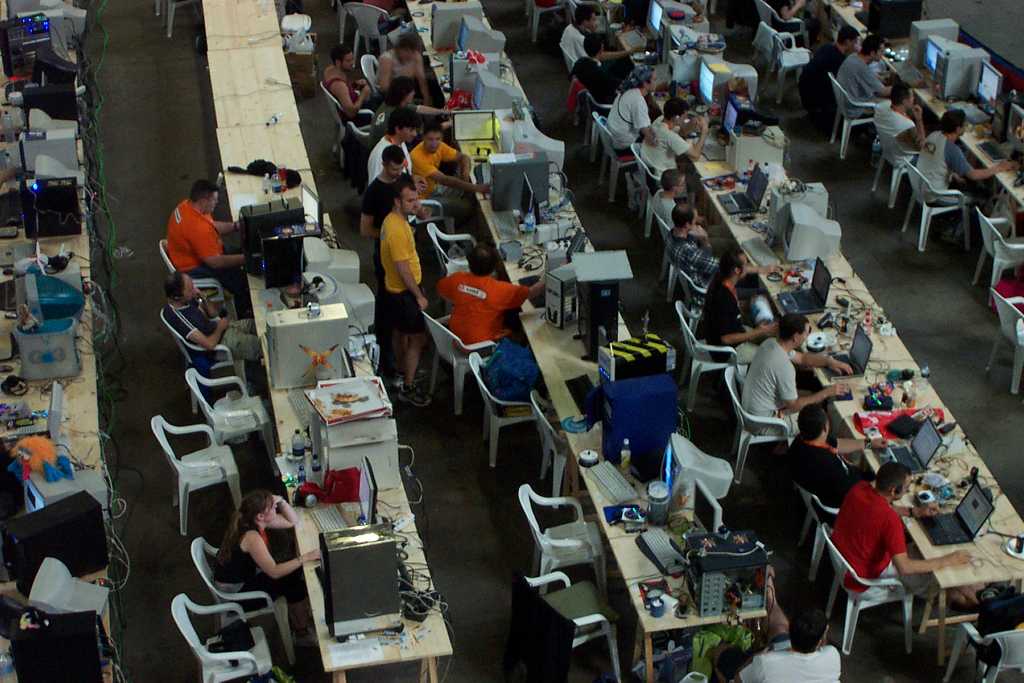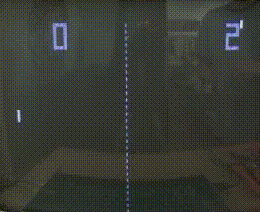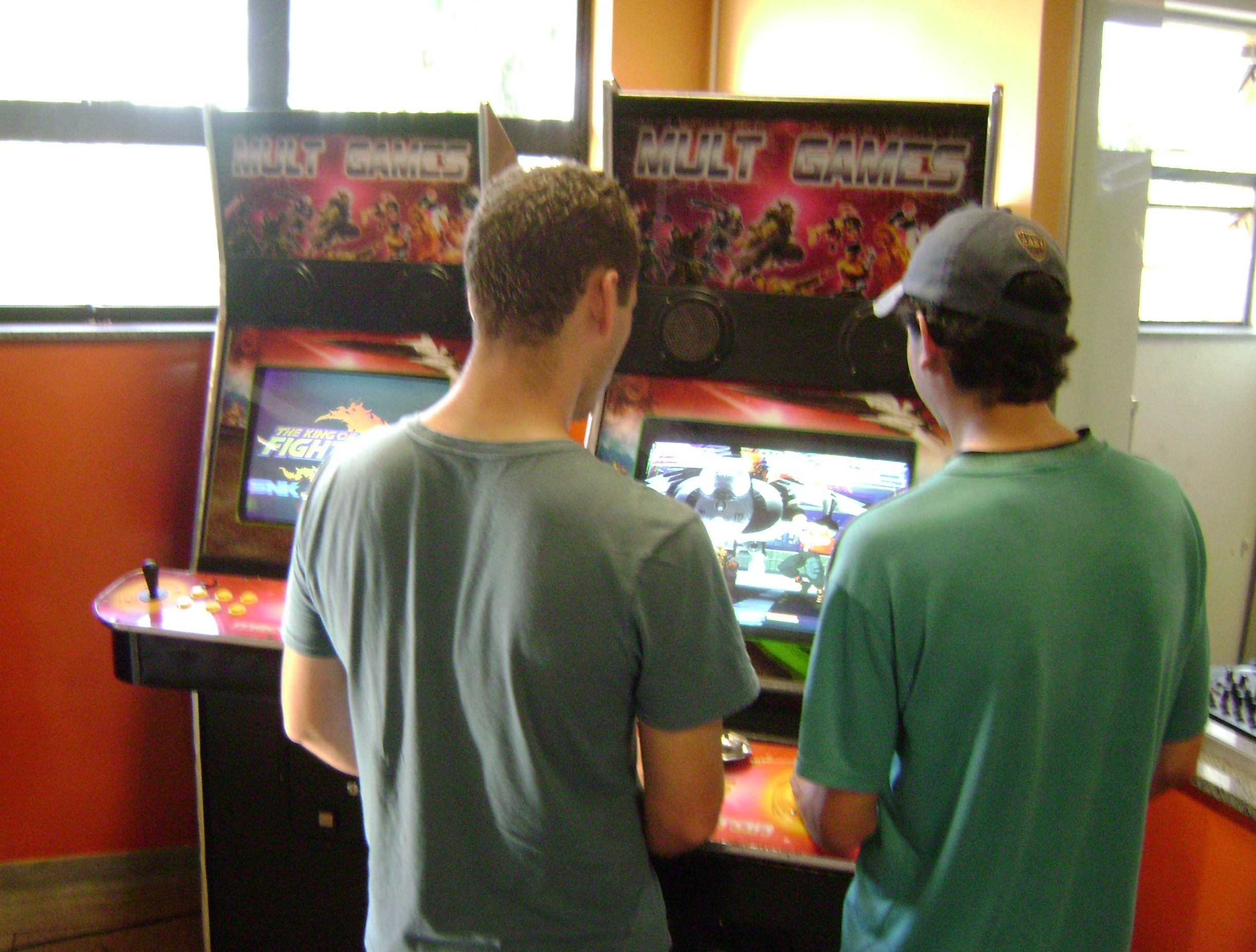|
1973 In Video Games
Events * March 19 – Kagemasa Kōzuki establishes Konami Industry Co., Ltd. Formerly the owner of a jukebox repair/rental business in Osaka, Japan, Kozuki launches Konami to manufacture amusement machines for video arcades. * May – Hudson Soft Ltd. is established in Sapporo, Japan for the purpose of marketing telecommunications devices and art photographs. * Taito, an electro-mechanical arcade game manufacturer, enters the video game industry and opens a North American branch. * Sega, an electro-mechanical arcade game manufacturer, enters the video game industry with ''Pong'' clones. * '' Computer Space'' makes appearances in the films ''Soylent Green'' and ''Sleeper''. * Empire versions I, II and III are developed for the PLATO system by John Daleske. Possibly the first team game ever, the first fifty-player game ever, and numerous other innovations. * Silas Warner takes over PLATO Empire version I and renames it Civilization. * Lemonade Stand is developed for the ... [...More Info...] [...Related Items...] OR: [Wikipedia] [Google] [Baidu] |
Kagemasa Kōzuki
is a Japanese industrialist who is the founder and chairman of Konami , is a Japanese multinational video game and entertainment company headquartered in Chūō, Tokyo, it also produces and distributes trading cards, anime, tokusatsu, pachinko machines, slot machines, and arcade cabinets. Konami has casino ..., a Japanese entertainment company. He is also known as Kaz Kozuki. Career Kagemasa Kōzuki founded Konami Industry Co., Ltd. in 1969. The company began manufacturing amusement machines for arcades in 1973. References 1940 births Living people Japanese video game businesspeople Japanese billionaires Japanese company founders Japanese inventors Kansai University alumni Konami people People from Osaka {{Japan-bio-stub ... [...More Info...] [...Related Items...] OR: [Wikipedia] [Google] [Baidu] |
First-person Shooter
First-person shooter (FPS) is a sub-genre of shooter video games centered on gun and other weapon-based combat in a first-person perspective, with the player experiencing the action through the eyes of the protagonist and controlling the player character in a three-dimensional space. The genre shares common traits with other shooter games, and in turn falls under the action game genre. Since the genre's inception, advanced 3D and pseudo-3D graphics have challenged hardware development, and multiplayer gaming has been integral. The first-person shooter genre has been traced back to ''Wolfenstein 3D'' (1992), which has been credited with creating the genre's basic archetype upon which subsequent titles were based. One such title, and the progenitor of the genre's wider mainstream acceptance and popularity, was ''Doom'' (1993), often considered the most influential game in this genre; for some years, the term ''Doom'' clone was used to designate this genre due to ''Doom''s i ... [...More Info...] [...Related Items...] OR: [Wikipedia] [Google] [Baidu] |
List Of Maze Video Games
Maze game is a video game genre description first used by journalists during the 1980s to describe any game in which the entire playing field is a maze. Quick player action is required to escape monsters, outrace an opponent, or navigate the maze within a time limit. After the release of Namco's ''Pac-Man'' in 1980, many maze games followed its conventions of completing a level by traversing all paths and a way of temporarily turning the tables on pursuers. Overhead-view maze games While the character in a maze would have a limited view, the player is able to see much or all of the maze. ''Maze chase games'' are a specific subset of the overheard perspective. They’re listed in a separate section. First-person maze games Maze chase games This subgenre is exemplified by Namco's ''Pac-Man'' (1980), where the goal is to clear a maze of dots while being pursued. ''Pac-Man'' spawned many sequels and clones which, in Japan, are often called "dot eat games". Other maze chases don ... [...More Info...] [...Related Items...] OR: [Wikipedia] [Google] [Baidu] |
Gotcha (video Game)
''Gotcha'' is an arcade video game developed by Atari and released in October 1973. It was the fourth game by the company, after the 1972 ''Pong'', which marked the beginning of the commercial video game industry, and the 1973 ''Space Race'' and ''Pong Doubles''. In the game, two players move through a maze, which continually changes over time. One player, the Pursuer, attempts to catch the other, the Pursued; if they do, a point is scored, and the players reset positions. The game emits an electronic beeping sound, which increases in pace as the Pursuer gets closer to the Pursued, and each game lasts a set amount of time. ''Gotcha'' was designed by Allan Alcorn, the designer of ''Pong'', and a prototype was constructed by Cyan Engineering, Atari's semi-independent research and development subsidiary. Development began in July 1973 as part of Atari's strategy to develop multiple types of games to separate themselves from their competitors, who they saw as focused primarily on cr ... [...More Info...] [...Related Items...] OR: [Wikipedia] [Google] [Baidu] |
Chicago Coin
Chicago Coin was one of the early major manufacturers of pinball tables founded in Chicago, Illinois. The company was founded in 1932 by Samuel H. Gensburg to operate in the coin-operated amusement industry. In 1977, Gary Stern and Sam Stern purchased the assets of the Chicago Coin Machine Division as it was then called to found Stern Electronics, Inc. They also produced various arcade games during the 1960s to 1970s. History Sam Gensburg founded Chicago Coin Machine Exchange with brother-in-law Sam Wolberg and third partner Lou Koren, a company which had a business of trade-ins for coin-operated games. In 1931, Sam Genburg's brothers Louis Gensburg, David Gensburg, and Meyer Gensburg had founded Genco as an amusement manufacturer and Samuel decided to enter that business by establishing Chicago Coin Machine Exchange. The company started off by making replacement boards for early pinball games before creating the table ''Blackstone'' (1933) which was manufactured by a partner nam ... [...More Info...] [...Related Items...] OR: [Wikipedia] [Google] [Baidu] |
Allied Leisure
Centuri, formerly known as Allied Leisure, was an American arcade game manufacturer. They were based in Hialeah, Florida, and were one of the top six suppliers of coin-operated arcade video game machinery in the United States during the early 1980s. Centuri in its modern inception was formed when former Taito of America president Ed Miller and his partner Bill Olliges took over Allied Leisure, Inc. They renamed it "Centuri" in 1980. Many of the video game machines distributed in the US under the Centuri name were licensed from overseas manufacturers, particularly Japanese developers such as Konami. Allied Leisure previously also manufactured pinball and electro-mechanical games, which were developed in-house. The company's vice president was Joel Hochberg from about 1976 to 1982, before he went on to work for Rare. Centuri had a close relationship with Konami, which licensed the North American rights of their games to Centuri during the early 1980s. This led to Konami acquirin ... [...More Info...] [...Related Items...] OR: [Wikipedia] [Google] [Baidu] |
Midway Manufacturing
Midway Games Inc., known previously as Midway Manufacturing and Bally Midway, and commonly known as simply Midway, was an American video game developer and publisher. Midway's franchises included '' Mortal Kombat'', '' Rampage'', ''Spy Hunter'', ''NBA Jam'', ''Cruis'n'', and ''NFL Blitz''. Midway also acquired the rights to video games that were originally developed by Williams Electronics and Atari Games, such as '' Defender'', ''Joust'', ''Robotron 2084'', '' Gauntlet'', and the '' Rush'' series. The company was founded as Midway Manufacturing in 1958, as an amusement game manufacturer. The company was then purchased by Bally Manufacturing in 1969, and used the Bally Midway name in the 1980s. In 1973, Midway moved into the interactive entertainment industry, developing and publishing arcade video games. The company scored its first mainstream hit with the U.S. distribution of ''Space Invaders'' in 1978. Bally then merged its pinball division into Midway in 1982. In 1988, Mi ... [...More Info...] [...Related Items...] OR: [Wikipedia] [Google] [Baidu] |
Williams Electronics
WMS Industries, Inc. was an American electronic gaming and amusement manufacturer in Enterprise, Nevada. It was merged into Scientific Games in 2016. WMS's predecessor was the Williams Manufacturing Company, founded in 1943 by Harry E. Williams. However, the company that became WMS Industries was formally founded in 1974 as Williams Electronics, Inc. Williams initially was a manufacturer of pinball machines. In 1964, Williams was acquired by jukebox manufacturer Seeburg Corp. and reorganized as Williams Electronics Manufacturing Division. In 1973, the company branched out into the coin-operated arcade video game market with its ''Pong'' clone ''Paddle Ball'', eventually creating a number of video game classics, including '' Defender'' and '' Robotron: 2084.'' In 1974, Williams Electronics, Inc. was incorporated as a wholly owned subsidiary of Seeburg. Williams Electronics was sold off as an independent company during the bankruptcy of Seeburg in 1980. In 1987, the company went ... [...More Info...] [...Related Items...] OR: [Wikipedia] [Google] [Baidu] |
Atari, Inc
Atari, Inc. was an American video game developer and home computer company founded in 1972 by Nolan Bushnell and Ted Dabney. Atari was a key player in the formation of the video arcade and video game industry. Based primarily around the Sunnyvale, California, area in the center of Silicon Valley, the company was initially formed to develop arcade games, launching with ''Pong'' in 1972. As computer technology matured with low-cost integrated circuits, Atari ventured into the consumer market, first with dedicated home video game console, home versions of ''Pong'' and other arcade successes around 1975, and into programmable consoles using game cartridges with the Atari Video Computer System (Atari VCS or later branded as the Atari 2600) in 1977. To bring the Atari VCS to market, Bushnell sold Atari to Warner Communications in 1976. In 1978, Warner brought in Ray Kassar to help run the company, but over the next few years, gave Kassar more of a leadership role in the company. Bushn ... [...More Info...] [...Related Items...] OR: [Wikipedia] [Google] [Baidu] |
Pong
''Pong'' is a table tennis–themed twitch arcade sports video game, featuring simple two-dimensional graphics, manufactured by Atari and originally released in 1972. It was one of the earliest arcade video games; it was created by Allan Alcorn as a training exercise assigned to him by Atari co-founder Nolan Bushnell, but Bushnell and Atari co-founder Ted Dabney were surprised by the quality of Alcorn's work and decided to manufacture the game. Bushnell based the game's concept on an electronic ping-pong game included in the Magnavox Odyssey, the first home video game console. In response, Magnavox later sued Atari for patent infringement. ''Pong'' was the first commercially successful video game, and it helped to establish the video game industry along with the Magnavox Odyssey. Soon after its release, several companies began producing games that closely mimicked its gameplay. Eventually, Atari's competitors released new types of video games that deviated from ''Pong'''s origi ... [...More Info...] [...Related Items...] OR: [Wikipedia] [Google] [Baidu] |
Arcade Cabinet
An arcade cabinet, also known as an arcade machine or a coin-op cabinet or coin-op machine, is the housing within which an arcade game's electronic hardware resides. Most cabinets designed since the mid-1980s conform to the Japanese Amusement Machine Manufacturers Association (JAMMA) wiring standard. Some include additional connectors for features not included in the standard. Parts of an arcade cabinet Because arcade cabinets vary according to the games they were built for or contain, they may not possess all of the parts listed below: *A display output, on which the game is displayed. They may display either raster or vector graphics, raster being most common. Standard resolution is between 262.5 and 315 vertical lines, depending on the refresh rate (usually between 50 and 60 Hz). Slower refresh rates allow for better vertical resolution. Monitors may be oriented horizontally or vertically, depending on the game. Some games use more than one monitor. Some newer cabinets h ... [...More Info...] [...Related Items...] OR: [Wikipedia] [Google] [Baidu] |
Ralph H
Ralph (pronounced ; or ,) is a male given name of English, Scottish and Irish origin, derived from the Old English ''Rædwulf'' and Radulf, cognate with the Old Norse ''Raðulfr'' (''rað'' "counsel" and ''ulfr'' "wolf"). The most common forms are: * Ralph, the common variant form in English language, English, which takes either of the given pronunciations. * Rafe (name), Rafe, variant form which is less common; this spelling is always pronounced , as are all other English spellings without "l". * Raife, a very rare variant. * Raif, a very rare variant. Raif Rackstraw from H.M.S. Pinafore * Ralf, the traditional variant form in Dutch language, Dutch, German language, German, Swedish language, Swedish, and Polish language, Polish. * Ralfs (given name), Ralfs, the traditional variant form in Latvian language, Latvian. * Raoul (other), Raoul, the traditional variant form in French language, French. * Raúl, the traditional variant form in Spanish language, Spanish. * Raul, ... [...More Info...] [...Related Items...] OR: [Wikipedia] [Google] [Baidu] |





